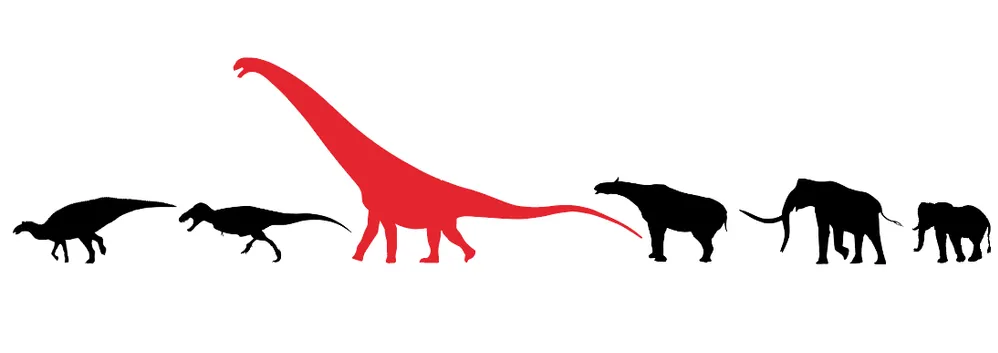Back when our ancestors were just little rat-sized creatures crawling along the floors of prehistoric forests, super-giant dinosaurs browsed the tops of the treelines – but how, and when, did they get so big?
Palaeontologists at Adelphi University, USA, have figured out that sauropods (the group of dinosaurs that became the largest animals to ever walk on land) grew to their exceptional sizes so that they could fill available niches – and they did this by evolving many more times than previously thought.
Rather than changing their sizes just one or two times throughout evolutionary history, Dr Michael D’Emic, an associate biology professor at Adelphi, discovered that individual sauropod species in fact evolved as many as 36 times over 100 million years.
“There is no one key factor, event, or evolutionary innovation that led to sauropods becoming the largest animals ever to walk the earth,” D'Emic told BBC Science Focus. “Instead, it seems that it was ‘right place, right time, right circumstances’.”
Each of the sauropods were ecologically distinct from one another, with different teeth, heads and bodies. This shows they were all able to find a form where they could live without competing with one another.
The study, published in Current Biology, contradicts the theory that animals’ sizes evolve over time – instead showing that sauropods were already giant early on in their evolutionary journey.
D’Emic calculated this by estimating the body mass of around 200 sauropod species based on their limb dimensions, before mapping these masses onto the group’s evolutionary tree.
Sauropods: fun facts
- Sauropods had air-filled bodies to get larger without the mass – it made their breathing more efficient, too.
- They laid eggs: spending less time on parenting meant they had more energy to grow.
- Unlike dinosaurs like velociraptors, sauropods had small teeth and a good gut. This meant they could chew less and ferment their own food – saving time and making them able to process food efficiently so they could eat lots without moving too much. Also, smaller heads equal longer necks.
The studyreveals that with each new sauropod family that emerged, at least one lineage independently became super-giant. The iconic long-necked Brachiosaurus, which grew up to 30m long, was one of these – as well as the chunky 21m long Apatosaurus.
The first sauropods were about six metres long and weighed around 800kg (about the same as an average rhino). The biggest evolved to be over 30m, like the Brachiosaurus, and weigh as much as 60,000kg (about 15 average African elephants). That’s like humans evolving to five times our height, or 75 times our weight.
“It’s important to note that some sauropods evolved to be smaller – the smallest would have been around 15 feet [4.6 metres] long and barely the weight of a bull,” says D’Emic.
In fact, the next steps for this research will be explaining why certain lineages became super-giant while others didn’t.

No land-dwelling mammals or even other dinosaurs have ever come close to being as big as the sauropods. After the extinction event that wiped out the dinosaurs, mammals rapidly evolved larger body sizes – but this plateaued at the gigantic mammoth.
“People tend to think of mammals as more advanced than dinosaurs in an evolutionary sense – after all, dinosaurs are a symbol of extinction,” D’Emic told BBC Science Focus. “So it is ironic that it is the more 'reptilian' characteristics of sauropods that likely allowed them to become the largest animals ever to walk on land.”
About our expert
Dr Michael D'Emic is a vertebrate palaeontologist and associate professor of biology in Adelphi University's College of Arts and Sciences based in New York, USA. His research has been published in journals including Science,Journal of Paleontology, andHistorical Biology.
Read more: